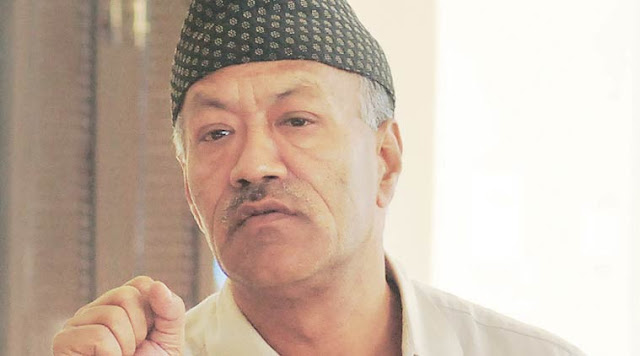Writes: Former Union Minister Mani Shankar Aiyar
A group of Kathmandu-based Nepalese lawyers has filed a petition before the World Court at The Hague challenging India's sovereignty over the Darjeeling hill areas.
It bases its case on Article 8 of the Indo-Nepalese treaty of 1950 which cancels all previous "treaties and engagements" entered into between Nepal and the British authorities in India "so far as matters dealt with herein are concerned".
Through a deed of grant dated 1835, "the hill of Darjeeling" was ceded to India by the raja of Nepal "on account of its cool climate, for the purpose of enabling the servants of the governor-general's government, suffering from sickness, to avail themselves of its advantages". Darjeeling thus came to India as a sanatorium!
The Kathmandu lawyers argue that as Article 8 of the 1950 treaty extinguishes all treaties and engagements concluded by the British, Darjeeling, ceded by such an engagement, must revert to Nepal. The petition will doubtless be rejected by the World Court on the ground that, in terms of the statutes of the World Court, the Government of India cannot be impleaded without its consent. This, however, would be a procedural dismissal. A substantive rebuttal of the petition's arguments is what needs to be made.
 |
| Map of India in 1805 |
The mere fact of the petition could spark a fire on the hill. For the Indian Gorkha dreads nothing more than reabsorption into Nepal. And nothing angers him more than being told that the Indian Gorkha and the Nepalese Gorkha, like Natha Singh and Prem Singh, are one and the same thing.
They are not. After all, no Bengali likes being mistaken for a Bangladeshi; any Thanjavur Tamil would resent being looked on as a Jaffna Tamil; and no Indian Punjabi would take it lying down if he were labelled a Pakistani Punjabi.
The problem is particularly acute for the Indian Gorkha as, unlike the Jaffna Tamil or the Pakistani Punjabi, the Nepalese Gorkha has the unfettered right to live and work in this country. Indeed, a Nepalese Gorkha is not only entitled but encouraged to join the Indian Army.
Uncertain of their national status, apprehensive of their future, confounded by an identity crisis imposed upon them, the Indian Gorkhas, under their leader, Subhas Ghising of the Gorkha National Liberation Front (GNLF), have for over a decade been pleading for the removal of ambiguity about the implications of Article 8.
At the same time, they have asked why the Government of India is paying Rs 5 lakh annually to the Government of Bhutan for retaining Kalimpong and the Dooars in the Union of India. Why pay rent for land that should be ours? The annual payment is an international obligation contracted by us under Article 3 of the India-Bhutan treaty of 1949.
Does this mean these territories are Bhutanese properties, held on lease by India? Will it take another GNLF agitation to get the Government to squarely answer these ambiguities? The last agitation was ended in 1988 when Rajiv Gandhi finally persuaded a blinkered Jyoti Basu to concede a measure of executive autonomy to a besieged micro-minority. In the decade that has passed, the Left Front Government in Calcutta has done everything it can to sabotage the Darjeeling Gorkha Hill Council (DGHC).
Funds have been diverted, held back, denied. The ludicrous argument is made, by a CPI(M) that has salted away uncounted crores into the personal ledger accounts of its cadres, that the DGHC is misusing the peanuts thrown at it.
Darjeeling district is that only in name: more than half its area falls in the plains and vast tracts of hill areas inhabited by Indian Gorkhas have been segregated and placed in the adjacent district of Jalpaiguri. The same goes for the Darjeeling Lok Sabha constituency: two-thirds of the votes are in the plains and fellow Gorkhas have been pushed into adjacent constituencies.
At the Centre, funds for the DGHC are not being sent directly to Darjeeling but funnelled through Calcutta; the CPI(M) not only mulcts its share of the booty but uses its purse strings to make DGHC councillors dance to its tune. Where the memorandum of settlement specified that the "Gorkha language" would be included in the 8th Schedule, the Centre, utterly gracelessly, put it down as "Nepali" and then clarified that that means the same as "Gorkhabhasha". There is insensitivity all around, in Delhi as much as in Calcutta.
Which is why the fire on the hill is being stoked. The fire can yet be doused if three steps are taken. One, on the model of the special constitutional provisions for Tuensang district of Nagaland, the executive and legislative authority of the West Bengal Government in the Darjeeling hill areas is made subject to the DGHC's concurrence, and central funds for the DGHC are channelled direct to Darjeeling.
Two, the district of Darjeeling is reconstituted to include all, and only, Gorkha hill areas, and Parliament's delimitation commission is approached to redraw the boundaries of the Darjeeling Lok Sabha constituency to ensure a voice for the Indian Gorkha in Parliament.
Three, all ambiguities are removed about the national status of the Indian Gorkhas and the land they inhabit.
Otherwise, the gathering momentum towards a Gorkha Pradesh, that is, the separation of the hill areas from the plains, might prove irresistible. Those who wish to avoid another partition of Bengal had best attend to making the Gorkhas feel a valued part of Bengal.
................................
This article was originally published on Feb 2, 1998 in INDIA TODAY originally posted at: bit.ly/1ntQXah
Does this make the Mr. Aiyar anti-National too?
Via TheDC










.jpg)


